
DEFINITY?? Wireless Business
System
9601 Pocket Phone User???s Guide
Comcode 108133398
Issue 3
October 1997

DEFINITY?? Wireless Business
System
9601 Pocket Phone User???s Guide
Comcode 108133398
Issue 3
October 1997
Copyright ?? 1997 Lucent Technologies
All Rights Reserved
Printed in USA
Notice
While reasonable efforts were made to ensure that the information in this document was complete and accurate at the time of printing, Lucent Technologies can assume no responsibility for any errors.
Changes and corrections to the information contained in this document may be incorporated into future reissues.
Your Responsibility for Your System???s Security
You are responsible for the security of your system. Lucent Technologies does not warrant that this product is immune from or will prevent unauthorized use of
Federal Communications Commission Statements
Part 15D: Unlicensed Personal Communications.
This equipment has been certified to comply with the regulations governing unlicensed Personal Communication devices pursuant to Subpart D of Part 15 of the FCC rules. This subpart set out the regulations for devices operating in the
Part 68: Network Registration Number. This equipment is registered with the FCC in accordance with Part 68 of the FCC Rules. It is identified by FCC registration number
Part 68:
???Answered by the called station
???Answered by the attendant
???Routed to a recorded announcement that can be administered by the CPE user
???This equipment returns
???A call is unanswered
???A busy tone is received
???A reorder tone is received
Trademarks
DEFINITY Enterprise Communications Server is a registered trademark of Lucent Technologies in the US and throughout the world.
DEFINITY Communications System is a registered trademark of Lucent Technologies in the US and throughout the world.
Ordering Information
The ordering number for this document is
You can be placed on a Standing Order list for this and other BCS documents you may need. Standing Order will enable you to automatically receive updated versions of individual documents or document sets, billed to account information that you provide. For more information on Standing Orders, or to be put on a list to receive future issues of this document, please contact the Lucent Technologies BCS Publications Center.
Users outside of the US and Canada should contact their local authorized Lucent Technologies distributor if they want to order additional copies of this document. Also, users in these countries should send any comments on the document to their local authorized Lucent Technologies distributor.
Disclaimer
Intellectual property related to this product and registered to AT&T Corporation has been transferred to Lucent Technologies Incorporated.
Lucent Technologies Fraud Intervention
If you suspect your are being victimized by toll fraud and you need technical support or assistance, call the BCS Technical Service Center Toll Fraud Intervention Hotline at 1 800
Comments
To comment on this document, return the comment card at the back of the document.
Acknowledgment
This document was prepared by the
BCS Product Documentation Development group,
Lucent Technologies
Middletown, NJ

Contents
Issue 3 October 1997 iii

Contents
iv Issue 3 October 1997

Contents
Issue 3 October 1997 v
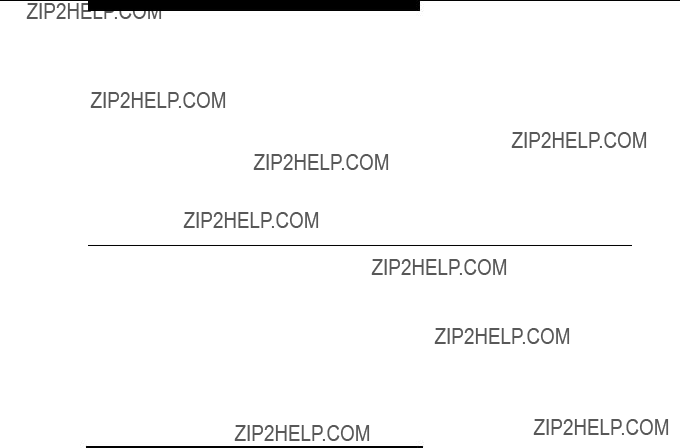
About This Book
The DEFINITY??Wireless Business System Pocket Phone User???s Guide contains information needed to ensure successful telecommunications using your DEFINITY 9601 Pocket Phone.
Audience
Anyone using the DEFINITY ECS 9601 Pocket Phone.
Issue 3 October 1997 xi

About This Book
Electromagnetic Compatability
Warning
Important Safety Guidelines for Users
For safe and efficient operation of your DEFINITY Wireless Business System (DWBS) Pocket Phone (wireless telephone), observe these guidelines.
Your wireless telephone is a radio transmitter and receiver. When the battery is installed, the phone is on and it receives and also sends out radio frequency (RF) energy. The phone operates in the frequency range of
Exposure to Radio Frequency Energy
The design of your wireless telephone complies with the latest Institute of Electrical and Electronic Engineers (IEEE) and the American Standards Institute (ANSI) safety levels with respect to human exposure to RF energy. Of course, if you would like to limit RF exposure even further, you may choose to control
the duration of your calls.
Cardiac Pacemakers
The Health Industry Manufacturers Association recommends that a minimum separation distance of six inches be maintained between a
???Always keep the pocket phone more than six inches from the pacemaker whenever the battery is in the pocket phone.
???Do not carry the pocket phone in a breast pocket.
???Use the ear opposite the pacemaker to minimize the potential for interference.
If you have any reason to suspect that interference is taking place, take the battery out of your phone immediately.
xii Issue 3 October 1997

Organization
Hearing Aid Compatibility
Most electronic equipment, such as equipment in hospitals, is shielded from RF energy. However, RF energy from wireless telephones may affect some electronic equipment.
Although the DWBS pocket telephone is compatible with inductively coupled hearing aids, you should consult your physician or hearing aid manufacturer to determine if your hearing aid is adequately shielded from external RF energy. The operation of inadequately shielded medical devices may be adversely affected when a portable wireless telephone is operating in close proximity.
Organization
This book is organized as follows:
???Chapter 1, "Overview" ??? Provides an overview of the DWBS, the 9601 Pocket Phone, and the battery charger.
???Chapter 2, "General Care" ??? Provides battery charger and general care instructions to ensure dependable and uninterruptible service.
???Chapter 3, "Features and Operations" ??? Provides information and diagrams needed to make full use of the DWBS 9601 Pocket Phone.
???Chapter 4, "Audible Information Tones" ??? Identifies and describes the DWBS 9601 Pocket Phone incoming call ring patterns, error beeps, error tone, confirmation tone, and warning tones.
???Appendix A, "Safety Instructions" ??? Discusses the appropriate safety instructions for the Pocket Phone and the charger.
???Appendix B, "Specifications" ??? Provides various specifications for the DWBS.
Issue 3 October 1997 xiii
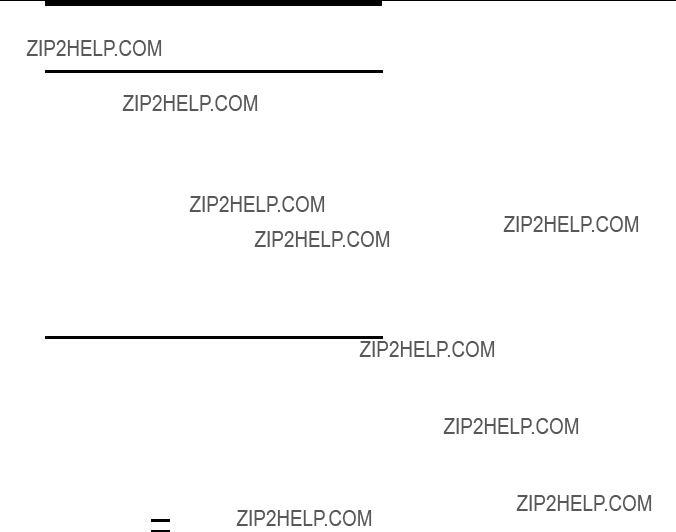
About This Book
Related Information
This book serves as the DEFINITY 9601 Pocket Phone user???s guide for the DWBS. Other books in the DWBS series are:
???DEFINITY ECS Interface for the DEFINITY Wireless Business System Guide,
???DEFINITY Wireless Business System Installation and Test Guide,
???DEFINITY Wireless Business System Maintenance Guide,
???DEFINITY Wireless Business System Site Planning,
???DEFINITY Wireless Business System 9601 Pocket Phone Quick Reference Card,
Typographic Conventions
The following typographic conventions are used in this book to convey information consistently and quickly.
???This typeface is used for references to titles of other information and for emphasis within other typefaces.
???This typeface emphasizes keywords to help clarify meaning in a sentence or to call attention to a distinction.
???The following note icon identifies additional information pertinent to the text preceding it.

 NOTE:
NOTE:
xiv Issue 3 October 1997

Although the emphasis of this guide is on the DEFINITY Wireless Business System (DWBS) 9601 Pocket Phone and its battery charger, this chapter also gives a short overview of the entire product. A detailed product description is provided in the DEFINITY Wireless Business System Site Planning and Installation Process. The following topics are covered in this chapter:
???"DEFINITY Wireless Business System Overview"
???"9601 Pocket Phone Overview"
DEFINITY Wireless Business System
Overview
The DWBS is a wireless telecommunications system that offers mobility around the workplace. It integrates wireless capabilities into the DEFINITY Enterprise Communications Server (ECS). The DWBS radio components operate in the unlicensed part of the Emerging Technologies band (1920 MHz to 1930 MHz), negating the need to obtain a license to use this product.
The Model 9601 is a
???Full Business Feature Access
???Wireless Mobility
???DEFINITY ECS Features
Issue 3 October 1997

Overview
9601 Pocket Phone Overview
The 9601 Pocket Phone is a

 NOTE:
NOTE:
See Figure
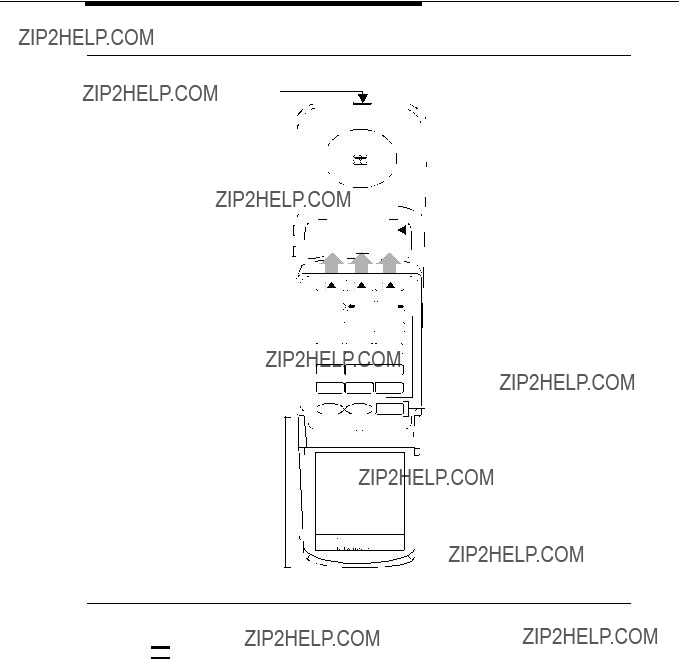
9601 Pocket Phone Overview
Battery
Release
7 PQRS 8 TUV 
 9 WXYZ
9 WXYZ
n Call
n End
n Hold



 9601A
9601A
Figure

 NOTE:
NOTE:
The soft key labels may change based on the pocket phone functions.
Issue 3 October 1997

Overview
9601 Pocket Phone Features
The Wireless Business System 9601 Pocket Phone includes these essential business features and benefits.
Table

Battery Charger Overview
Battery Charger Overview
The Wireless Business System Battery Charger, which is provided with each 9601 Pocket Phone, is a desktop charger. The charger is equipped for either wall or desktop mounting.
The charger charges:
???Fully discharged battery in less than 1.5 hours
???Pocket phone with battery and a spare battery pack
Your 9601 Pocket Phone must be charged before using it for the first time. All instructions and a diagram for this process are provided in Chapter 2, "General Care".
Issue 3 October 1997

This chapter describes the battery charger and explains how to use the battery pack properly. It includes general care instructions to ensure that your 9601 Pocket Phone provides dependable and uninterrupted service. The following topics are covered in this chapter:
???"Charging the 9601 Pocket Phone for the First Time"
???"Using the 9601 Pocket Phone Battery Charger"
???"Inserting a Spare Battery Pack into the Charger"
???"Removing a Spare Battery Pack from the Charger"
Charging the 9601 Pocket Phone for the
First Time
The 9601 Pocket Phone is powered by a rechargeable battery. Before using the phone for the first time, you must place the battery pack into the charger for approximately 1.5 hours or until the green light appears.

 NOTE:
NOTE:
The pocket phone can ring while it is in the charger. It can also display and update information.
Issue 3 October 1997

General Care
Charging the Phone with a Battery
1.Place the phone in the Battery charger. Ensure that the charger is plugged into a properly grounded
2.Ensure that the Phone indicator is yellow (refer to Figure

 NOTE:
NOTE:
If the Phone indicator is red, the handset is not seated in the charger properly.

 NOTE:
NOTE:
If the Phone Charge indicator is flashing green, the charger is evaluating the state of the battery before going into the appropriate charging mode.
Using the Phone
The pocket phone is fully charged once the Phone indicator turns green. When this happens, the phone is ready for use.

 NOTE:
NOTE:
The phone can be removed when the light is yellow, but the talk time and standby time are both reduced.
When the pocket phone is removed from the charger, it begins to consume power during both talk time and standby time. A fully charged battery pack provides about four hours of talk time and 48 hours of standby time. However, after 48 hours of standby time there is no talk time available.
!WARNING:
The rechargeable battery packs contain nickel and cadmium. Do not burn or puncture these batteries. Like other batteries of this type, if they are burned or punctured, they could release toxic material, which could cause injury. Do not dispose of them with ordinary trash. For information about recycling or proper disposal, consult your local solid waste (trash) collection or disposal organization.
Low Battery Indicator
When the battery power is low, the pocket phone will emit a warning tone and the LOW BATT message will appear on the phone display. When this occurs, you have approximately 20 minutes of talk time left.

Low Battery Indicator
Phone LED
Indicator
Battery LED
Indicator
Spare
Battery
Pack
Cradle
Charger Status Indicator:
Figure
Issue 3 October 1997

General Care
Using the 9601 Pocket Phone Battery
Charger
The Pocket Phone Battery Charger has two LED indicators that can display yellow, green, flashing green, or red. The left indicator is labeled Phone and the right indicator is labeled Battery.

 NOTE:
NOTE:
Refer to Figure
The Phone LED Indicator
When the phone with battery is placed in its proper position in the charger, the color of the Phone indicator reflects the following conditions:
???
???Steady
???Flashing
???
The Battery LED Indicator
The optional spare battery pack should be stored in the charger???s spare battery compartment to ensure that a fully charged battery pack is always available for use. The charger will charge both the handset (with battery) and the spare battery pack when they are in their proper receptacles. When the spare battery pack is placed in its proper position in the charger, the color of the Battery indicator reflects the following conditions:
???
???Steady
???Flashing
???Red/Flashing
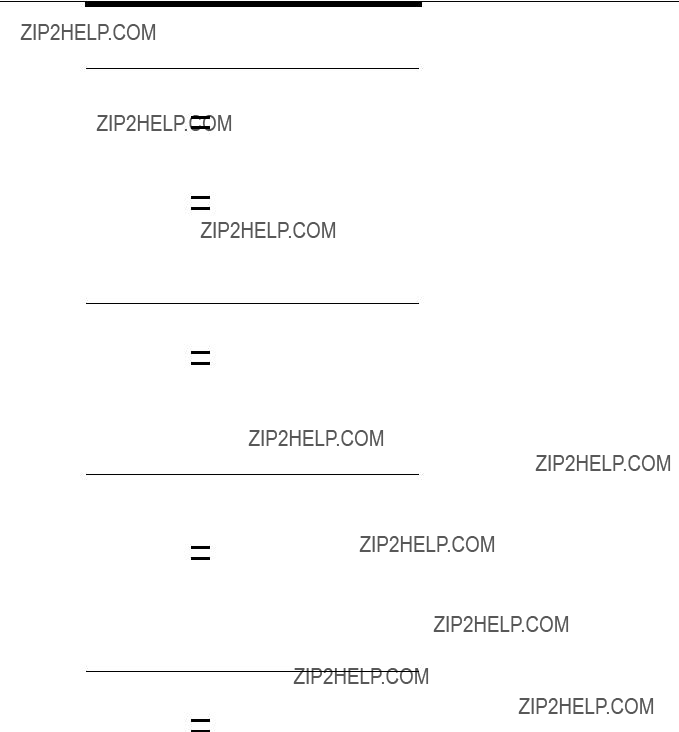
Using the 9601 Pocket Phone Battery Charger
Inserting a Spare Battery Pack into the Charger
1.Place the spare battery pack into the Spare Battery Pack cradle.

 NOTE:
NOTE:
The battery pack must be placed behind the lip of the cradle.
2.Ensure that the Battery indicator is yellow.

 NOTE:
NOTE:
When the Battery indicator changes from yellow to steady green, the spare battery pack is fully charged. It can remain in the charger until needed.
Removing a Spare Battery Pack from the Charger
1.Ensure the Battery indicator is steady green.

 NOTE:
NOTE:
The spare battery can be removed from the Spare Battery Pack cradle if the light is yellow, but the battery will not be fully charged.
2.Remove the spare battery pack from the Spare Battery Pack cradle.
Inserting the 9601 Pocket Phone into the Charger
1.Slide the pocket phone into the pocket phone cradle.
2.Ensure that the Phone indicator is yellow.

 NOTE:
NOTE:
When the Phone indicator changes from yellow to steady green, the pocket phone is fully charged. It can remain in the charger until needed.
Removing the 9601 Pocket Phone from the
Charger
1.Ensure the Phone indicator is steady green.

 NOTE:
NOTE:
When the phone is placed in the charger, it is initially yellow for a few seconds. You can answer a phone call during this time if the battery is not fully drained.
2.Remove the pocket phone from the cradle.
Issue 3 October 1997

General Care
Inserting a Spare Battery Pack into the Charger
1.The message LOW BATT appears on the phone display window when it is time to insert a charged spare battery.
2.Remove the battery pack from the pocket phone by moving the latch on top of the phone forward until it releases the battery pack. Slide the battery pack off the pocket phone.
3.Place the spare charged battery pack into the Battery Compartment of the pocket phone.

 NOTE:
NOTE:
When the Battery indicator changes from yellow to steady green, the spare battery is fully charged. It can remain in the charger until needed. See the following figure.

Using the 9601 Pocket Phone Battery Charger
Figure
Issue 3 October 1997
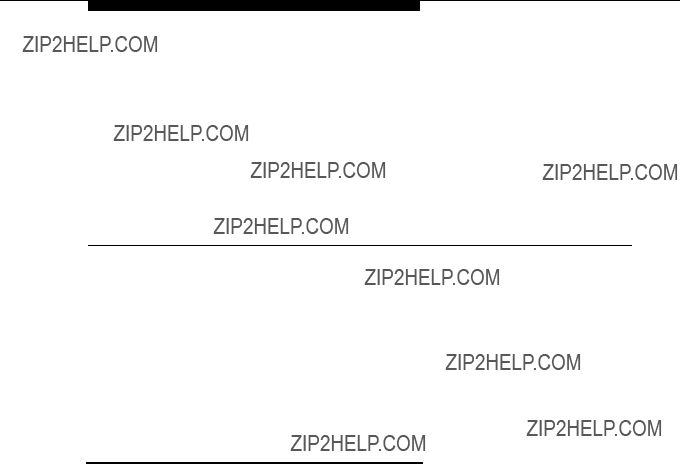
This chapter provides information needed to make full use of your 9601 Pocket Phone. The first portion of this chapter provides a detailed description and diagram of the pocket phone. The second section is presented in a ???how to??? format and focuses on feature identification and access.
DEFINITY 9601 Pocket Phone Features
The DEFINITY 9601 Pocket Phone is a portable
Among its many benefits, the 9601 Pocket Phone includes the following essential business features normally found only on a wired desk phone. The "Operating the 9601 Pocket Phone" section in this chapter gives specific instructions for these and other functions.
???
???
???
???
See Figure
Issue 3 October 1997

Features and Operations
Battery
Release
7 PQRS 8 TUV 
 9 WXYZ
9 WXYZ
n Call
n End
n Hold



 9601A
9601A
Figure

Features of the 9601 Pocket Phone
Features of the 9601 Pocket Phone
The 9601 Pocket Phone has the following features:
???Soft Key Interface
???Hard Key Interface
???Ringer/Volume Control Buttons
???Display
???Dial Pad
Soft Key Interface
The Pocket Phone 9601 has a row of three soft keys located immediately below the Display. Soft keys are buttons with preprogrammed labels and functions that can change dynamically as you perform functions and make selections. Soft keys are intended to provide a
For the purpose of distinguishing these keys from others on the pocket phone, the soft keys are marked as follows:

 NOTE:
NOTE:
Because each soft key can have multiple functions, the third line (bottom row) on the Display is used for displaying associated soft key function labels. You can access Conference and Transfer with your soft keys (see the previous figure and also the "Operating the 9601 Pocket Phone" section in this chapter).
Hard Key Interface
The Pocket Phone has several hard keys. Hard keys are buttons with labels and functions that do not change. The Pocket Phone has the following hard keys.
Issue 3 October 1997

Features and Operations
Hard Keys for Menu Control
The hard keys for menu control are:
???
???Prev
???
Hard Keys for Call Management
???
???
???
Volume Control Buttons
The Pocket Phone is equipped with two Volume Control buttons. These buttons are located on the left side of the pocket phone. Each button is used for adjusting the receiver volume in the earpiece as well as the ringer volume. Specifically, these buttons enable you to adjust the receiver volume (higher or lower) after Call is pressed and to adjust the ringer volume (higher or lower) before Call is pressed.
Battery Charging Contacts
The Pocket Phone is equipped with a removable and rechargeable battery pack. Battery Charging Contacts, which are located on the removable battery pack, enable the phone to charge when contact is made with the Wireless Business System Battery Charger.
Display
The Pocket Phone Display is a
???DEFINITY ECS display messages (including Automatic Numbering Identification [ANI] numbers, if provided from the network)
???Message waiting indicator
???Menu driven feature operations
???Low battery message
???Personalized extension of the pocket phone
???Unique serial number and software version number
???Soft key labels

Low Power Mode
???Radio link/connection status Information
???Dialed digits displayed
???Visual dial tone indicator
???Service messages (described in Chapter 4)
Dial Pad
The Pocket Phone Dial Pad consists of the standard 12 buttons for dialing telephone numbers and accessing the DEFINITY ECS call features.
Low Battery Indicator
When the battery power is low, the pocket phone emits a warning tone and the LOW BATT message appears on the Pocket Phone Display.
Low Power Mode
This feature conserves battery power. If the Pocket Phone is within a coverage area, and if no local activity has taken place for three minutes, the Pocket Phone powers down and the display is blank. Any unfinished soft key input is lost when the Pocket Phone powers down.
If the Pocket Phone becomes linked to a System after power down, the normal display screen is activated.
Issue 3 October 1997

Features and Operations
Wireless Business System 9601 Pocket Phone
Battery Release
Press  Next
Next 
 to display soft keys for
to display soft keys for
Conf (Conference) Trans (Transfer) Drop (Drop)
(See HOW TO)








 9601
9601
Operating the 9601 Pocket Phone
HOW TO:
nAdjust Ringer and Warning/ Notification Tones
???Press and hold 
 (higher or lower).
(higher or lower).
nAdjust Receiver Volume
???Press Call .
???Press 
 (higher or lower) to adjust volume of earpiece.
(higher or lower) to adjust volume of earpiece.
n Answer a Call
??? Press Call when the handset rings.
nConference a Call
???Press  Next
Next 

 to display the Conf soft key.
to display the Conf soft key.
???Press the Conf soft key.
???Dial the telephone number of the next party.
???Press  Next
Next 

 to display the Conf soft key.
to display the Conf soft key.
???Press the Conf soft key to conference the two calls together on one call appearance.
nDrop a Call
???Press  Next
Next 

 to display the Drop soft key.
to display the Drop soft key.
???Press the Drop soft key.
n End a Call
??? Press End .
nHold a Call
???Press  Hold
Hold .
.
???Press the soft key below the flashing indicator to return to the call.
nMake a Call
???Press Call .
???Dial the telephone number of the party.
nTransfer a Call
???Advise the caller that you are transferring the call.
???Press  Next
Next 

 .
.
???Press the associated Trans soft key.
???Dial the transfer number.
???Press  Next
Next 

 to display the Trans soft key.
to display the Trans soft key.
???Press the Trans soft key to complete the transfer process.
Figure
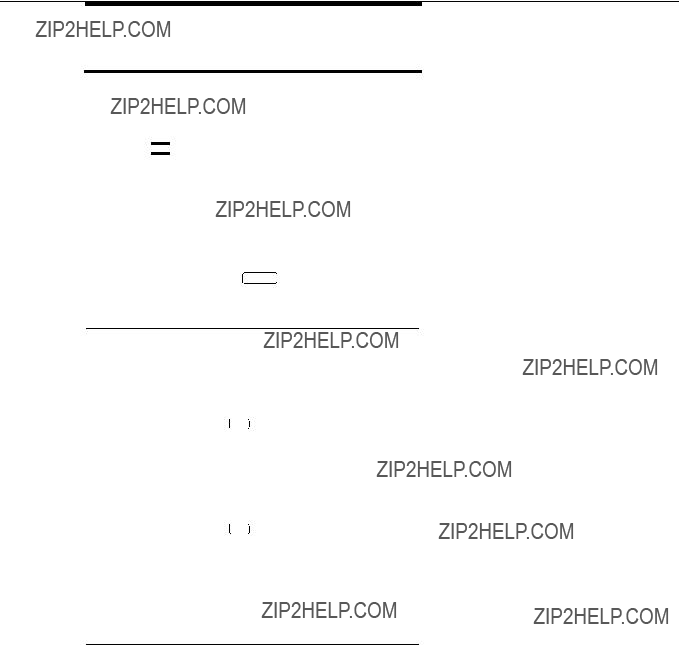
Operating the 9601 Pocket Phone
Operating the 9601 Pocket Phone
This section provides information needed to make full use of your 9601 Pocket Phone. The information presented focuses on feature identification and access.

 NOTE:
NOTE:
If you are using your 9601 Pocket Phone for the first time and cannot perform the operations described in the following ???how to??? section, call your administrator. A Pocket Phone must be administered before you can use it to access any switch service.
The following ???how to??? information is arranged in a logical order. See the diagram on the previous page for button and key locations. If you are experiencing difficulty, press  Menu twice; this should allow you to begin your operation again.
Menu twice; this should allow you to begin your operation again.
Adjusting the Receiver Volume
The Volume Control buttons enable you to adjust the receiver volume. To do so, you must be in the coverage area and either on a call or listening to dial tone.
To adjust the receiver volume:
1.Press Call .
2.Press and hold the Up Volume Control button until the appropriate volume level is reached, or
3.Press and hold the Down Volume Control button until the appropriate volume level is reached.
4.Press End to end the call.
The receiver volume remains at the level set until you press a Volume Control button while you are on a call.
Adjusting Ringer and Warning/Notification
Tones
The Volume Control buttons enable you to adjust the ringer and warning/notification tones (higher or lower).
To adjust the ringer and warning/notification tones:
1.Press and hold the Up Volume Control button until the appropriate volume level is reached, or
2.Press and hold the Down Volume Control button until the appropriate volume level is reached.
Issue 3 October 1997

Features and Operations

 NOTE:
NOTE:
The Call button is not used during this procedure. Pressing this button before Steps 1 and 2 will cause an adjustment in the receiver volume.
Making Calls
To make a call:
1.Press Call .
2.Dial the telephone number of the party.

 NOTE:
NOTE:
If you prefer, you can also make a call by pressing one of the two leftmost soft key flashing line appearances instead of the call button.A warning tone is generated if the pocket phone detects any of the following conditions:
???Out of Range
???No Channel Available
???Service Denied
These conditions are discussed in Chapter 4.
Answering Calls
To answer an incoming call:
1.Press Call when the handset rings.

 NOTE:
NOTE:
The call will be answered and conversation can begin.

 NOTE:
NOTE:
If you prefer, you can also answer a call by pressing the soft key flashing line appearance instead of the call button.
Transferring Calls
The 9601 Pocket Phone enables you to transfer a call from one extension to another.
To transfer a call:
1.Advise the caller that you are transferring the call.
2.Press  Next .
Next .
3.Press the associated Trans soft key. Another call appearance appears on the display.

Operating the 9601 Pocket Phone
4.Dial the transfer number.
5.Press  Next to display the Trans soft key.
Next to display the Trans soft key.
6.Press the Trans soft key to complete the transfer process.

 NOTE:
NOTE:
When both Call Appearance indicators are in use, you cannot transfer additional parties or receive and make other calls.
Conferencing Calls
The Conference Call feature enables you to conference up to six parties.
To activate a conference call:
1.Inform the active party that he/she will be placed on hold in order to call the third party.
2.Press  Next to display the Conf soft key.
Next to display the Conf soft key.
3.Press the Conf soft key.

 NOTE:
NOTE:
The active call is placed on hold and the second Call Appearance indicator is activated.
4.Dial the telephone number of the next party.
5. When the party answers the call, press  Next to display the Conf soft key.
Next to display the Conf soft key.
6.Press the Conf soft key to conference the two calls together on one call appearance.

 NOTE:
NOTE:
When both Call Appearance indicators are in use, you cannot conference additional parties or receive and make other calls.
Holding Calls
To place a call on hold:
1.Press  Hold .
Hold .

 NOTE:
NOTE:
The call is placed on hold and the Call Appearance indicator will flash.
2.Press the soft key below the flashing indicator to return to the call.
Issue 3 October 1997

Features and Operations
Ending Calls
To end a call:
1. Press End .
Dropping Calls
This feature enables you to drop the last person you added to the conference call.
To drop a call:
1.Press  Next to display the Drop soft key.
Next to display the Drop soft key.
2.Press the Drop soft key.

The DWBS is provisioned with a single audible information tone. This tone can serve as any one of the following:
???Incoming call ring patterns
???Error beep
???Error tone
???Confirmation tone
???Warning tone
Incoming Call Ring Patterns
Incoming calls are subject to the following ring patterns:
???1 ring = A call from another extension.
???2 rings = A call from outside or from the attendant.
???3 rings = A priority call from another extension, or from an Automatic Callback call you placed.
???
Error Beep
An error beep occurs whenever a hard key (Menu, Prev or Next) or any of the soft keys are pressed but are not applicable at the moment.
Issue 3 October 1997

Audible Information Tones
Warning Tone
A warning tone will sound and a message will appear on the Display under any one of the conditions discussed in the following sections.
The warning tone sounds for either of the following scenarios:
???Call button is pressed and an
???Pocket Phone enters a Going Out of Range condition during a call. This means that the pocket phone is still in a coverage area but is moving out of the coverage area and, therefore, the speech quality may be degraded
No Channel Available
The warning tone will sound when the Call button is pressed and no radio channels are available for calls. In such a case, wait a few seconds and try again.

 NOTE:
NOTE:
If this happens frequently, contact your system administrator for corrective action.
No Access Rights
The warning tone will sound when the Call button is pressed and your pocket phone does not have permission to use the current system.

 NOTE:
NOTE:
Contact your system administrator for corrective action.
Location Registration Failure
The warning tone will sound when the Call button is pressed and your pocket phone no longer has permission to use the system.

 NOTE:
NOTE:
Contact your system administrator for corrective action.
Service Denied
Contact your system administrator.

Using the Product
This section contains instructions related to safety labels on the product:
!WARNING:
indicates the presence of a hazard that can cause severe or fatal personal injury if the hazard is not avoided.
!CAUTION:
indicates the presence of a hazard that will or can cause minor personal injury or property damage if not avoided.
Always follow these basic safety precautions when using this product to reduce risk of injury from fire or electric shock.
!WARNING:
Failure to ground charger properly results in a risk of electrical shock, which can cause serious personal injury. This product requires a
Issue 3 October 1997

Safety Instructions
!WARNING:
The rechargeable battery contains nickel and cadmium. Do not burn or puncture the battery. Like other batteries of this type, if it is burned or punctured, it could release toxic material, which could cause injury. Do not dispose of it in household garbage. For information about recycling or proper disposal, consult your local solid waste (garbage) collection or disposal organization.
???Read and understand all instructions in this booklet before using this product.
???Observe all warnings and instructions marked on the product.
???Do not use the product near water or when you are wet. If product comes in contact with any liquids, unplug the power cord immediately. Do not plug the product back in until it has dried thoroughly.
???Never push objects of any kind into this product through housing slots because the objects may touch hazardous voltage points or short out parts that could result in a risk of electric shock. Never spill liquid of any kind on the pocket phone.
???Never place this product near or over a radiator or heat register.
???Slots and openings in the housing and the back or bottom are provided for ventilation. To protect the housing from overheating, these openings must not be blocked or covered. Therefore, do not place the product on a bed, sofa, rug, or other similar surface. Also, do not place this product in an enclosed area unless proper ventilation is provided.
???Use only the correct power source. If you are not sure of the power supply to your location, consult your local power company.
???This product uses a
???Do not allow anything to rest on the power cord. Do not locate this product where the cord will be abused by persons walking on it. Do not overload wall outlets as this can result in the risk of fire or electric shock. Do not staple or otherwise attach the power cord to building surfaces.
???Use only the type of battery pack shipped with this product.
???If you suspect a gas leak, report it immediately, but use a telephone away from the area in question. The telephone???s electrical contacts could generate a tiny spark. While unlikely, it is possible that this spark could ignite a heavy concentration of gas. This product is not approved for use in areas labeled by the Occupational Safety and Health Administration (OSHA) as ???explosive environments.??? Only ???Explosive Atmosphere Telephones??? may be used in such hazardous environments.

Maintaining the Pocket Phone
???Unplug this product from wall outlets and telephone jacks before cleaning. Clean exposed parts with a soft, damp cloth. Do not use liquid or aerosol cleaners.
???Unplug this product from the wall outlet, remove the telephone line cord from the modular wall jack or communications systems switch/control unit, and refer servicing to qualified service personnel under the following conditions:
???Power cord or plug is damaged or frayed
???Product does not operate normally by following the operating instructions. Adjust only those controls that are covered by the operating instructions because improper adjustment of other controls may result in damage and will often require extensive work by a qualified technician to restore the product to normal operation.
???Product has been dropped and the housing has been damaged.
???This product should be serviced by (or taken to) a qualified service center when service or repair work is required. Do not open the product; there are no user serviceable components inside.
Maintaining the Pocket Phone

 NOTE:
NOTE:
The cautions and warnings in the previous section are also applicable to this section, as are the safety instructions.
This telephone is designed to provide
???Keep the telephone in an area free of dust, smoke, and moisture.
???Do not place the telephone near a heating duct, radiator, or other heat source, and do not drop or expose it to excessive shock or vibration.
???Unplug the battery charger if its power cord is damaged, if liquid is spilled into it, or if its housing becomes cracked or otherwise damaged.
???To clean the telephone, wipe the outside housing with a soft,
!CAUTION:
Your telephone contains sensitive electronic parts. Never submerge it in any kind of liquid, and never use detergents, alcohols, solvents, abrasive cleaners, or an excessive amount of water when cleaning the housing and faceplate. To do so could result in irreparable damage.
Issue 3 October 1997

Safety Instructions
Also, battery contacts should be covered to prevent their possible exposure to loose metal bits (for example, coins or chains in a pocket).
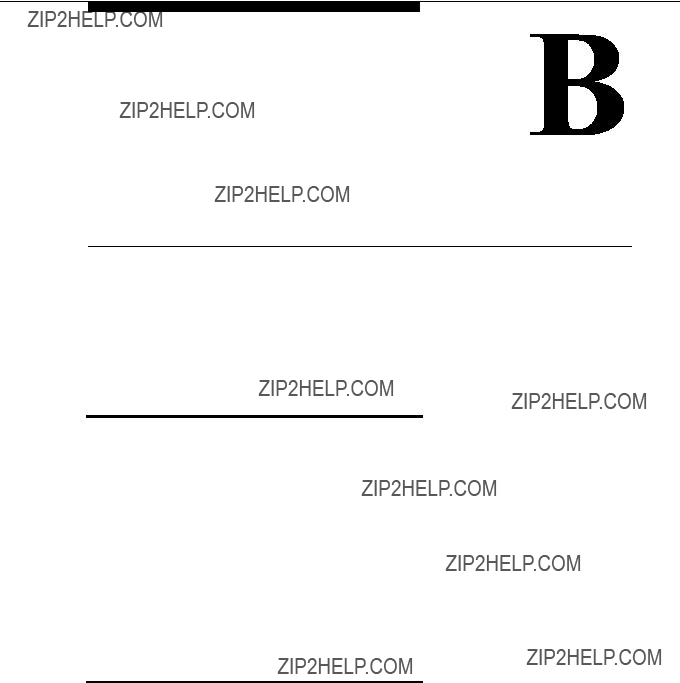
Specifications
This appendix provides various specifications for the DWBS.
System Capacity and Coverage
The following support is provided.
???Maximum of:
???260 pocket phones
???10 Radio Controllers
???20 Wireless Fixed Bases
???80 Cell Antenna Units
???Coverage of 800,000 square feet.
???Radio capacity of 12 channels (calls) per band and eight bands of 1.25 MHz
Base Stations
The following support is provided.
???Two base station options providing maximum coverage for your business premises, including:
???Wireless Fixed Bases, which are the main base station components in the system antenna infrastructure
???Cell Antenna Units, which are used to extend the effective coverage area of the Wireless Fixed Bases
Issue 3 October 1997
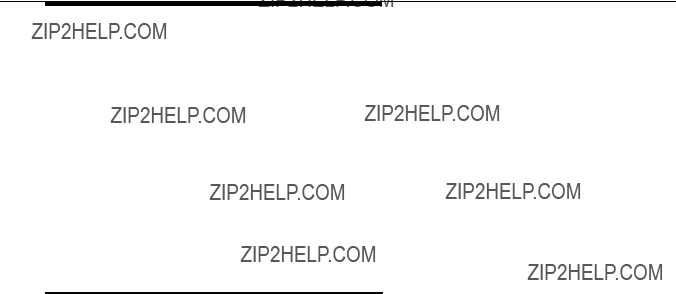
Specifications
???Wireless Fixed Bases interface to the integrated DEFINITY ECS Radio Controller port card
???Maximum distance of 5000 ft from the DEFINITY ECS to the WFB
???
???
???Time Division Multiple Access (TDMA)
???Operation within the isochronous (1.920 MHz ??? 1.930 MHz) part of the emerging technology band (Unlicensed PCS)
???32 Kbps ADPCM encoding for voice
Operating Temperatures
The pocket phone should be used within the 55?? F to 95?? F temperature range.

GlossaryGL
A
access rights
Air interface procedure that assigns to the pocket phone a Temporary Portable User Identifier (TPUI) and its extension number. The pocket phone initiates this procedure each time it enters a system. A successful completion of the procedure includes an implicit Location Registration.
Feature that enables a calling party to reconnect to a called party if the latter walks out of the coverage area and then back into the coverage area within 60 seconds.
B
Bridging
Feature that allows both the pocket phone and the wired phone to ring at the same time.
C
CAU. See Cell Antenna Unit.
cell
Radio coverage area of a CAU or WFB with an internal antenna cluster. Also, cells supported by all the WFBs connected to one RC.
Cell Antenna Unit (CAU)
Optional remote antenna that connects to a Wireless Fixed Base. It contains a transmit power amplifier, transmit/receive switch,
D
Deep Sleep Mode
Mode assumed by the pocket phone whenever the phone repreatedly tries to access the system and fails to do so due to
DEFINITY Management Terminal
Data determinal used for the administration and maintenance of the DEFINITY system.
Issue 3 October 1997

Glossary
E
Emerging Technologies Band
20 MHz of unlicensed spectrum for Personal Communication Service (PCS) in North America. The band is isochronous
Estimator
Tool within the WiSE Expert Design System that is used to gather information about the customer site. This tool is used to provide an initial price quote and to configure the DWBS.
F
FCC. See Federal Communication Commission
FDMA. See Frequency Division Multiple Access
Federal Communication Commission (FCC)
Government agency within the US that is reponsibile for assigning and regulating the radio spectrum so that it can be shared by many users without unacceptable interference.
fixed part
Part of the DWBS radio infrastructure that is not portable. This includes the Radio Controllers, Wireless Fixed Bases, and Cell Antenna Units.
Frequency Division Multiple Access (FDMA)
Radio access method for which each call uses a different carrier frequency. FDMA allows one conversation per radio.
H
hard keys
Dedicated buttons on the pocket phone that are labeled for particular functions (for example, making calls).
hardware vintage
Numbering scheme for identifying the components and physical design of a DWBS part, such as a circuit pack.
I
I2
Interface between a Radio Controller and a Wireless Fixed Base.
I3
Interface between a Wireless Fixed Base and a Cell Antenna Unit.
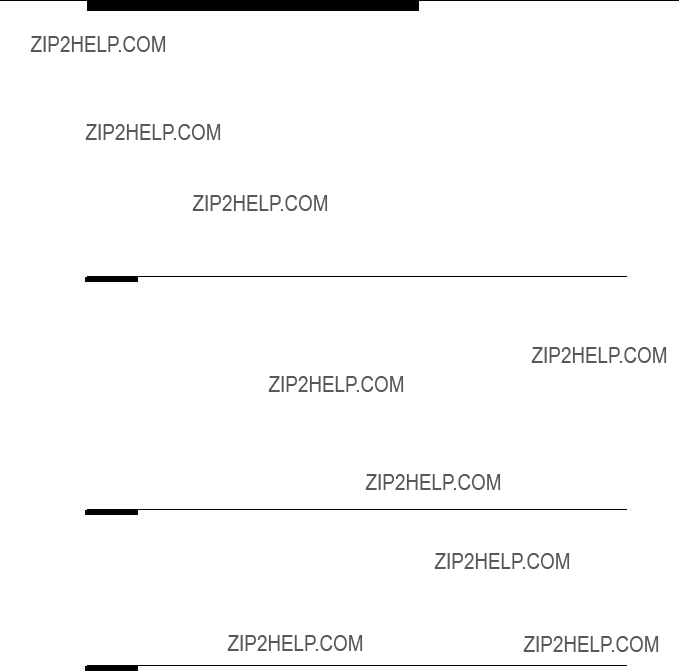
Glossary
Initialization and Administration System
Services support system for PBX administration and maintenance.
International Portable Equipment Identity
Unique number used to identify a pocket phone for administration and
International Portable User Identity
Number sent by the fixed part to a pocket phone during the access rights procedure. Also, this number is sent by the pocket phone to the fixed part during the location registration procedure.
IPEI. See International Portable Equipment Identity
IPUI. See International Portable User Identity
L
local features
Features that are supported by the pocket phone (for example, the directory).
local tones
Tones produced locally in the pocket phone. Includes the following tones: ringer, warning, error, error beep, confirmation, key click.
Location Registration
M
Mobility Manager (MM)
Software added to the DEFINITY system to control and track pocket phones as they change location within the DWBS coverage area. The Mobility Manager directs all control and voice information to the appropriate Radio Controller for each pocket phone. It is also responsible for the maintenance and administration of the DWBS and pocket phones.
P
Dialing that occurs before dial tone is granted.
portable part
Part of the DWBS radio infrastructure that is portable (most notably, the pocket phones).
Dialing that occurs after dial tone is granted.
Issue 3 October 1997

Glossary
Predictor
Tool within the WiSE Expert Design System that uses site information as input to determine the optimal placement of the antennas within the DWBS.
R
Radio Controller (RC)
Circuit pack that provides the interface between the DEFINITY system and the radio subsystem. It controls one or more Wireless Fixed Bases.
Radio Propagation Measurement Tool (RPMT)
Tool within the WiSE Expert Design System that is used to provide basic radio measurements. The RPMT looks like a pocket phone and, once it is administered, it can also initiate and receive phone calls. The RPMT can supplement the Predictor, serve as a troubleshooting device, and be used at site surveys.
RC. See Radio Controller
RPMT. See Radio Propagation Measurement Tool
S
soft keys
Buttons whose labels appear on an associated display and whose labels and functions can change dynamically as the user performs functions and makes selections.
T
TDMA. See Time Division Multiple Access
Terminal Portable User Identifier (TPUI)
Number returned by the fixed part to the pocket phone during the Location Registration procedure.
Time Division Multiple Access (TDMA)
Radio access method for which each call uses a different time slot. TDMA permits multiple conversations per radio.
TPUI. See Terminal Portable User Identifier
U
UTAM
Group charged by the Federal Communications Commission to coordinate the relocation of microwave incumbents out of the unlicensed spectrum (1910 to 1930 MHz) and to coordinate the deployment of unlicensed devices and systems in that spectrum.

Glossary
W
Wireless Fixed Base (WFB)
Component that houses the fixed radio hardware. It provides the radio functions to transmit digitally to the pocket phones and to receive digital signals from the pocket phones. A WFB can support a maximum of four external Cell Antenna Units.
Issue 3 October 1997

Index IN
A
adjusting
receiver volume,
ringer and warning/notification tones,
Automatic Numbering Identification,
B
Battery Charger Overview,
C
calls
answering,
conferencing, calls,
D
dropping, calls,
E
ending, calls,
H
holding, calls,
I
L
low power mode,
M
making, calls,
O
operating, 9601 Pocket Phone
P
pocket phone benefits,
charging initially,
battery charging contacts,
display,
hard key interface,
hard keys for menu control and call management,
low battery indicator,
inserting into charger,
removing from charger,
R
receiver volume, adjusting,
9601 Pocket Phone from charger,
Issue 3 October 1997